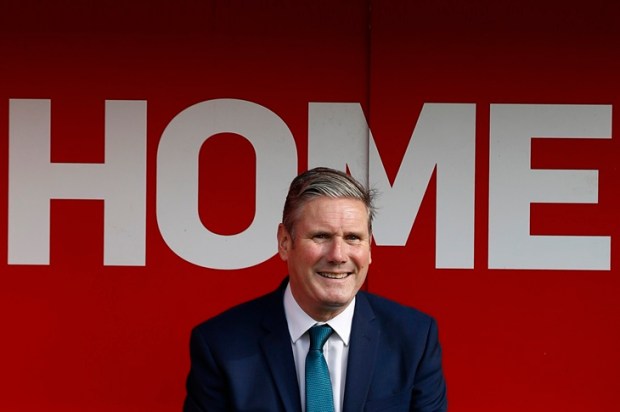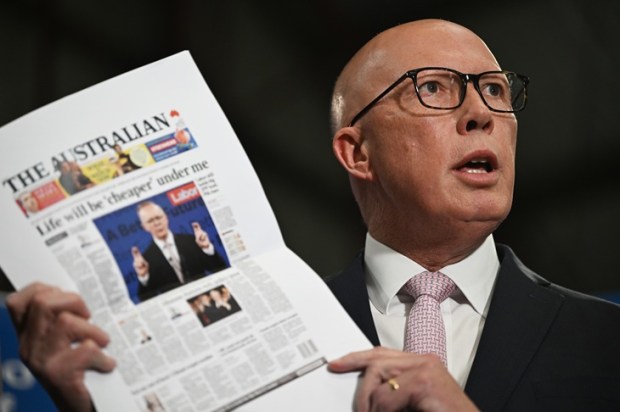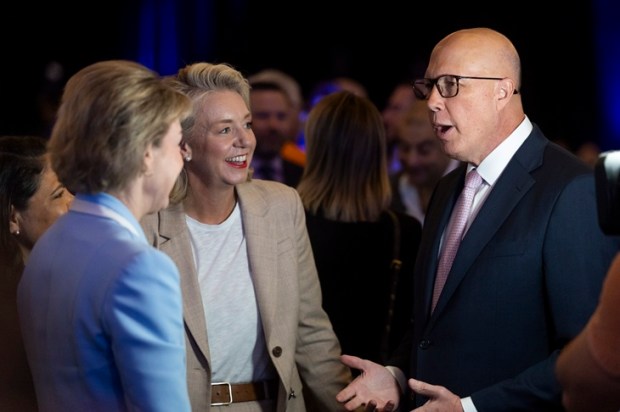It’s hard to think of an industry, outside of modern universities, whose blatant attempt to increase and safeguard their own revenues would be viewed so benevolently by the public and supported so extensively by politicians.
Education has long been viewed as the great equaliser.
In the 1860s and 1870s, there was a successful push for state-provided education for young Australians, seen partly as a way of opening opportunities to all and partly as a means of ensuring that future generations could fully participate in the democracy that was being established for them.
Encouraging university education was a natural extension of this noble desire to see future generations have access to more and better opportunities. In recent decades, Australians have gone all-in on universities, enabled by generous taxpayer support. Today, almost half of 25-34-year-old Australians have a Bachelor’s degree or higher level of qualification, compared to just over a quarter of 55-64-year-olds.
But the benefits of this level of education, and the standard of that education itself, are questionable to say the least. It is strange that we have developed a culture that sometimes appears to verge on fetishisation of higher education, encouraged by a university sector that has proven highly effective at presenting its self-interest as some kind of unabated and altruistic public good.
In February 2025, the head of Universities Australia, Luke Sheehy, rolled out some of the lines we have come to expect from universities. ‘I’ve seen first-hand the power of education,’ he said. ‘The way it transforms lives. How it lifts people out of adversity and into opportunity, opening the door to a bigger, brighter future.’
‘My own Mum … was not afforded the same opportunity as me,’ Sheehy continued, his personal version of an emotionally manipulative line constantly repeated to young people. ‘Growing up in the 1950s and 1960s, the daughter of a postman, she was told university wasn’t for her.’
‘Instead, Mum was sent to St Vincent’s to undertake nursing training. But she had aspirations for me, and she made sure her experience wasn’t mine.’
Aside from the insult delivered to Australia’s hundreds of thousands of nurses and their families that their chosen vocation indicates a lack of ‘aspiration’, Sheehy’s claims about the material benefits of a university education may have been accurate 20 years ago, but they are less assured today.
In a 2020 paper, the Productivity Commission demonstrated that university graduates aged under 35 were more likely to have an inferior job in 2018 than they were in 2001. As shown in the chart below, taken from that report, while young Australians with a Bachelor’s or postgraduate degree saw decent average wage growth between 2001 and 2008, their wages declined between 2008 and 2018.
Too many people have been going to university at the same time that Australians are staying in the workforce for longer, resulting in an oversupply of workers for the kinds of jobs these individuals are equipped for.
A generation of young Australians graduated, feeling that they were owed a decent job in the knowledge economy, only to find that there was no work for them. They found themselves over-qualified, underemployed, and underpaid.
Irrespective of graduate outcomes, the constant funnel of students going into universities has proved to be a financial boon to those institutions. Although many like to claim the university sector is in a ‘parlous financial position’, this is not necessarily true. The University of Sydney, for example, saw its revenues increase by 37 per cent, closely followed by the second largest, The University of Melbourne, which struggled with a mere 28 per cent increase in revenue over this period.
Part of the explanation for this growth is that the modern university has perfected the pernicious corporatist model of privatising gains and socialising costs. This can be seen in foreign students: universities charge them a fortune while they take up the accommodation that would otherwise go to Australians, are exploited in jobs that would otherwise be filled by Australians, and send what money they can back to their families overseas.
But the issue is broader than this.
Medium and large corporations have reduced their training costs by outsourcing this task to universities, pushing the costs onto taxpayers without whom universities would cease to exist (only 2.3 per cent of total university revenue in 2022-23 came from current, domestic students). This is another example of privatised benefits (accruing to both larger businesses and universities) and socialised costs (paid for by all Australians, but particularly by taxpayers who did not go to university).
More broadly still, funnelling more and more young people into universities is having profound impacts on our social and political stability.
Peter Turchin, the founder of the field of mathematical study of long-term social trends called cliodynamics, has warned that the ‘overproduction of elites’ has historically put societies in a very difficult position. Highly educated young people enter the ‘elite aspirant class’ but if there are not enough elite positions to go round then a portion of them will become disillusioned with the social, economic, and political system they feel has wronged them. As Turchin wrote in The End Times: ‘History (and CrisisDB) tells us that the credentialed precariat … is the most dangerous class for social stability. Overproduction of youth with advanced degrees has been the most significant factor in driving social upheavals, from the Revolutions of 1848 to the Arab Spring of 2011.’
There is some Australian data that supports this thesis. In the Australian National University’s 2022 Australian Election Study, for example, those with a Bachelor’s degree or higher were much less likely to express a middle-ground level of support for the four main political parties (Liberals, Nationals, Labor, and Greens) than those without post-school qualifications. They were far more likely to express very high levels of dislike for the political parties they do not support, compared to those with lower levels of education who appear happy to ‘live and let live’.
While those without post-school qualifications are about evenly split between the very left-wing (18.3 per cent) and the very right-wing (18.1 per cent), those who have been to university are much more likely to be very left-wing (30.7 per cent) compared to very right-wing (7.6 per cent). This data supports the long-existing observation that universities tend to make people more left-wing, but the concerning insight is that it makes them both radically left-wing and out of touch with their less educated compatriots.
As we continue to push more people into universities with the overt support of public policy settings, the data indicates that this may be driving them to become more politically radical. This does not bode well for our social and political stability.
The methods by which universities have nakedly pursued their financial interests while claiming to be the great benefactors of mankind – and not only being allowed to do so, but being handsomely supported by the taxpayers to do so – will long be studied by rapacious interest groups who seek to privatise benefits and socialise costs.
One of these methods, which is worthy of a more detailed exposition, was revealed by Sheehy in his speech. In the context of encouraging more enrolments in and taxpayer support for the universities he lobbies on behalf of, Sheehy pleaded that ‘the conversation must turn from politics to policy’. This is a preferred technique of technocratic elites, who by insisting they are only interested in policy, not politics, claim the ‘neutral ground’ in a given debate. This is not a genuine argument to remove politics from an issue, but an argument to accept a certain kind of politics as the natural order.
First published on Cian Hussey’s substack here.

























